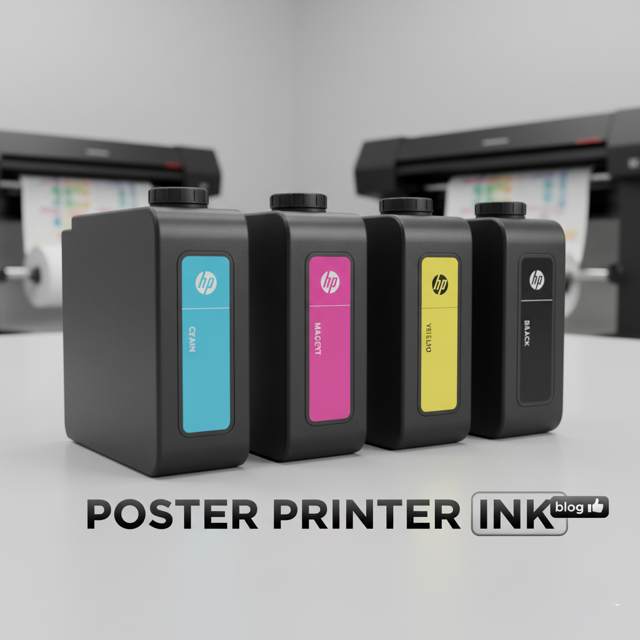
DISCOUNTED EDUCATION PRICING! CALL 1-877-891-8411. We Gladly Accept School Purchase Orders!

Introduction: Understanding Your School Poster Maker Machine
The world of poster creation has undergone a remarkable transformation over the past decades. What once required painstaking manual design and traditional printing methods has evolved into a sophisticated, technology-driven process centered around powerful poster maker machines. These remarkable devices have revolutionized how we bring visual ideas to life, offering unprecedented precision, consistency, and creative possibilities.
School poster makers represent far more than just printers – they are a gateway to professional-quality visual communication. Whether you’re working with a large-format printer, a professional plotter, or an all-in-one printing system, these machines combine advanced engineering with user-friendly features to deliver outstanding results. From school events to corporate presentations, trade show displays to retail advertising, school poster makers have become indispensable tools in the modern designer’s arsenal.
Understanding your school poster maker machine is crucial in today’s competitive visual landscape. These sophisticated devices offer capabilities that were once available only to professional print shops: precise color matching, various paper handling options, special finishing effects, and the ability to produce posters of virtually any size. However, with these capabilities comes the responsibility to master both the technical and artistic aspects of poster production.
Many newcomers to poster maker machines make the mistake of treating them like ordinary office printers. This oversight often leads to disappointing results, wasted materials, and unnecessary frustration. A school poster maker is a precision instrument that requires proper setup, maintenance, and understanding of its various features and limitations. Just as a master chef must understand their kitchen equipment, a successful poster designer must develop a deep familiarity with their poster maker machine.
The investment a school poster maker machine goes beyond the initial purchase price. It represents a commitment to quality, efficiency, and professional results. Whether you’re using your machine in a busy office environment, a school setting, or a professional design studio, knowing how to maximize its potential can mean the difference between mediocre output and stunning, professional-grade posters that command attention and achieve their intended impact.
This comprehensive guide will walk you through everything you need to know about working with poster maker machines. From essential setup procedures to advanced techniques, troubleshooting tips to maintenance schedules, we’ll cover the crucial aspects of operating these sophisticated devices. Our goal is to help you transform your design ideas into vibrant, professional-quality posters while avoiding common pitfalls and maximizing your machine’s capabilities. https://schoolposterprinters.com/poster-maker-machine-a-teachers-perspective/
Section 1: Getting Started with Your School Poster Maker Machine
Pre-Production Setup
Paper Loading Tips
Section 2: Design Considerations for Machine Printing
Resolution Requirements
Color Management
Bleed and Margins
Section 3: File Preparation Best Practices
File Formats
File Organization
Section 4: Machine-Specific Optimization
Print Settings
Maintenance Schedule
Section 5: Troubleshooting Common Issues
Print Quality Problems
Section 6: Professional Finishing Techniques
Post-Production Handling
Lamination Options
Section 7: Cost Management
Material Optimization
Maintenance Costs
Section 8: Production Workflow Tips For School Poster Makers
Time Management
Quality Control Checklist
Section 9: Advanced Features
Special Effects
Custom Settings
Conclusion: Maximizing Your Investment
Your poster maker machine is more than just a piece of equipment – it’s a gateway to professional-quality visual communication that can transform your ideas into impactful reality. As we’ve explored throughout this guide, mastering your poster maker machine requires a thoughtful combination of technical knowledge, creative skills, and systematic approach to maintenance and operation. https://www.canva.com
The Journey to Mastery
The path to becoming proficient with school poster makers is an ongoing journey of learning and refinement. Each project presents unique challenges and opportunities for growth. Successful operators understand that expertise comes not just from reading guides like this one, but from hands-on experience, careful observation, and a willingness to learn from both successes and setbacks. https://schoolposterprinters.com/what-is-the-best-poster-maker-for-schools/
Building a Professional Foundation
Regular maintenance serves as the cornerstone of successful poster production. Like any sophisticated piece of equipment, your poster maker machine requires consistent care to perform at its best. This investment in maintenance pays dividends through reliable operation, consistent quality, and extended equipment life. Remember that prevention is always more cost-effective than repair.
The Importance of Workflow Development
Establishing efficient workflows is crucial for maximizing your machine’s potential. This includes:
Continuous Improvement Strategy
To truly master your poster maker machine, adopt a mindset of continuous improvement:
Building Professional Relationships
Success with your poster maker machine often extends beyond individual skill:
Return on Investment Considerations
Maximizing your return on investment requires balancing several factors:
Environmental and Sustainability Aspects
Modern poster production must consider environmental impact:
Future-Proofing Your Operation
Stay ahead of industry changes by:
Final Tips for Success
The Path Forward
Remember that a well-maintained school poster maker machine is just the beginning. True success comes from the systematic application of knowledge, consistent attention to detail, and a commitment to continuous improvement. Your machine is a powerful tool that, when properly understood and carefully operated, can produce outstanding results that exceed expectations and deliver real value to your organization or business.
As you continue to work with school poster makers, maintain a curious and experimental mindset while respecting the fundamental principles of quality production. Each project is an opportunity to refine your skills, try new techniques, and push the boundaries of what’s possible with your equipment.
The future of poster making continues to evolve with new technologies and capabilities. Stay informed, stay curious, and most importantly, stay committed to excellence in every aspect of your poster production process. Your dedication to mastering your poster maker machine will be reflected in the quality of your output and the satisfaction of your clients or stakeholders.
Remember: Success in poster production is not just about having the right equipment – it’s about developing the knowledge, skills, and processes to consistently create professional-quality results that make a lasting impact.